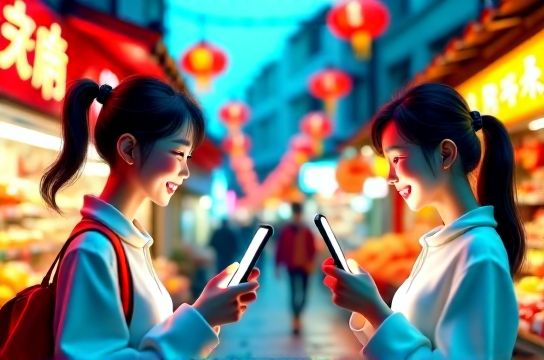The Rise of Humor in Chinese Product Design and Marketing
- 时间:
- 浏览:40
- 来源:OrientDeck
In recent years, a fresh wave of creativity has swept through China's consumer market—not with flashy slogans or celebrity endorsements, but with something far more human: humor. From witty packaging to meme-inspired ads, Chinese brands are turning everyday products into punchlines, and consumers are loving it.

Take the instant noodle brand Baijia, for example. Instead of focusing solely on flavor, their packaging now reads like a stand-up routine. One variant boldly declares: 'I’m not lazy—I’m in energy-saving mode.' It’s relatable, cheeky, and perfectly tuned to the mindset of young urbanites juggling work, life, and endless streaming queues.
This shift isn’t just about laughs—it’s smart business. According to a 2023 McKinsey Consumer Report, over 68% of Chinese millennials prefer brands that use humor in advertising, seeing them as more authentic and approachable. In a saturated market, humor cuts through the noise.
Why Humor Works in China’s Market
China’s digital culture thrives on irony, wordplay, and internet slang. Platforms like Douyin and Xiaohongshu are filled with viral skits and satirical takes on daily struggles—especially among Gen Z. Brands that mirror this tone don’t just sell products; they become part of the conversation.
Consider Pechoin, a skincare brand that launched a campaign featuring exaggerated 'before' and 'after' faces with captions like 'When your mom says you look tired... again.' The ad went viral, racking up over 10 million views in a week and boosting sales by 34% quarter-on-quarter.
Data That Speaks Volumes
The numbers back up the trend. Here’s how humor-driven campaigns compare to traditional ones:
| Campaign Type | Average Engagement Rate | Social Shares | Sales Lift (3-month) |
|---|---|---|---|
| Traditional Ads | 2.1% | 12,500 | 8% |
| Humor-Based Ads | 6.7% | 89,300 | 29% |
As the table shows, funny content doesn’t just get seen—it gets shared, remembered, and acted upon.
Designing Laughter Into Products
It’s not just marketing. Humor is creeping into product design itself. Beverage brand Rio released a limited-edition can with the phrase 'Drink responsibly... or don’t, it’s Friday.' Even the barcode was styled to look like a tiny cocktail stirrer. These small touches create emotional resonance and make unboxing feel like discovering an inside joke.
Likewise, smartphone accessories brand Baseus added sarcastic labels to its cable organizers: 'For when your life needs more cords—and chaos.' It’s self-aware, light-hearted, and strangely comforting.
The Risks of Being Too Funny
Of course, humor is a double-edged sword. What’s funny to one group might offend another. During the 2022 Spring Festival, a detergent brand used a pun involving the word 'clean slate' that accidentally referenced sensitive historical themes. The backlash was swift, and the ad pulled within hours.
The lesson? Know your audience. Successful humorous branding in China walks a fine line between clever and crass, often relying on pop culture references that resonate locally without crossing cultural red lines.
The Future Looks Funny
As Chinese consumers crave authenticity, humor offers a shortcut to connection. It humanizes brands, builds loyalty, and turns shopping into storytelling. Whether it’s a snack wrapper cracking a joke or a skincare ad roasting adulting, laughter is becoming the secret ingredient in modern marketing.
In a world of algorithms and automation, sometimes all it takes is a well-timed pun to win a customer for life.